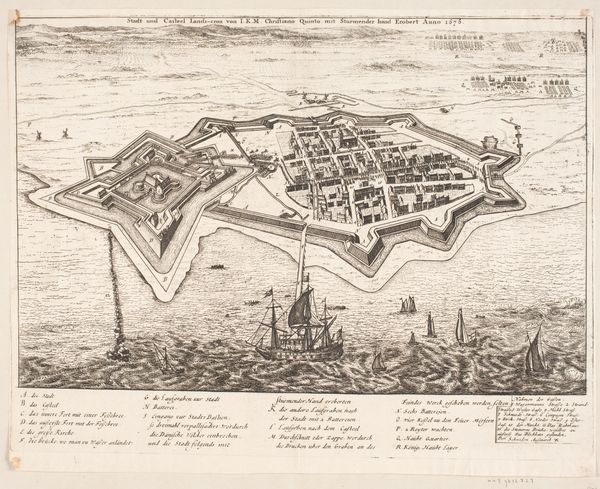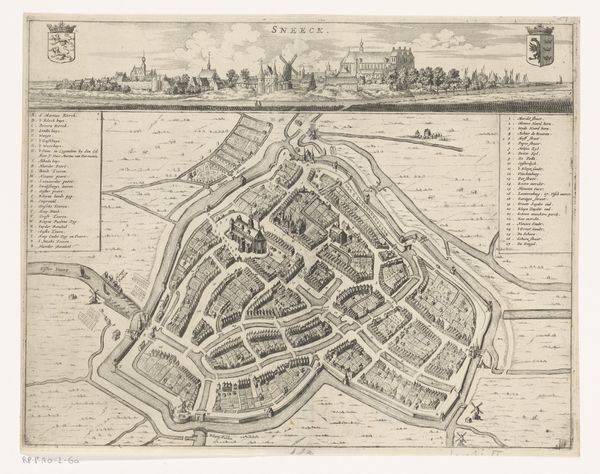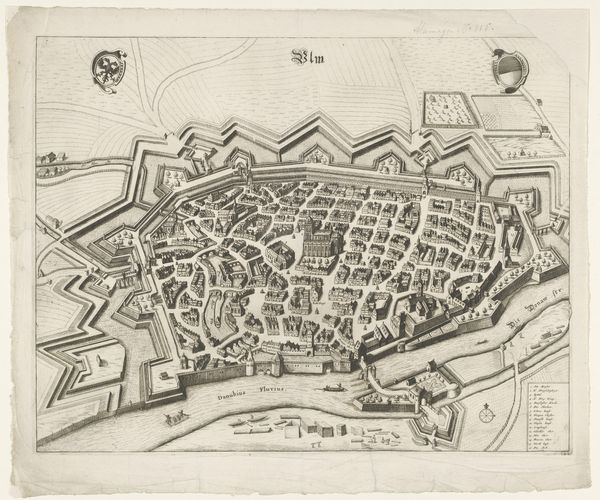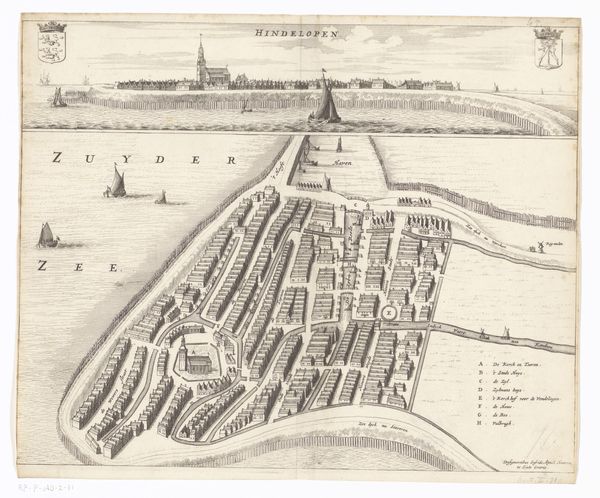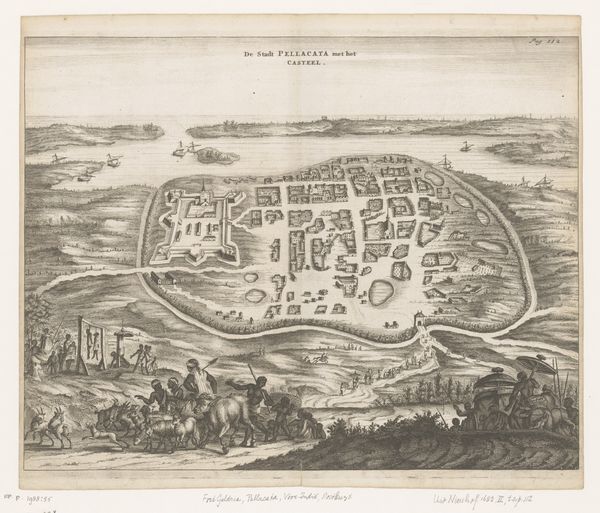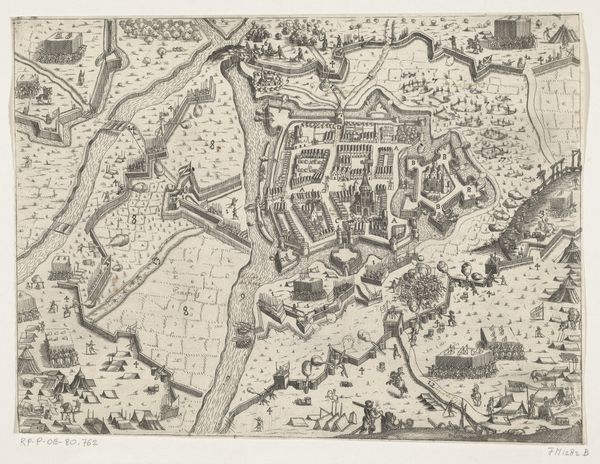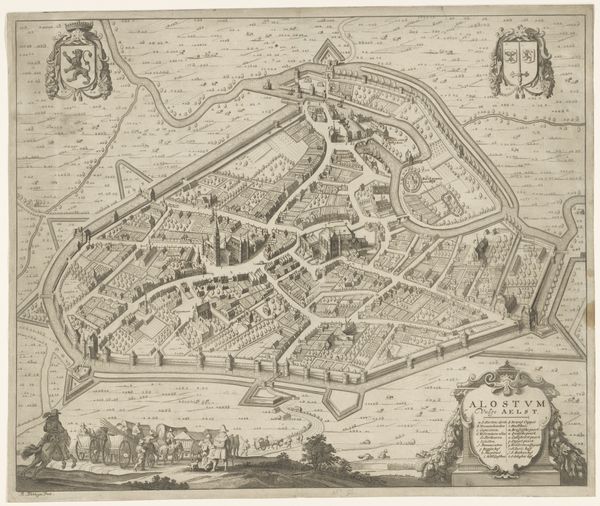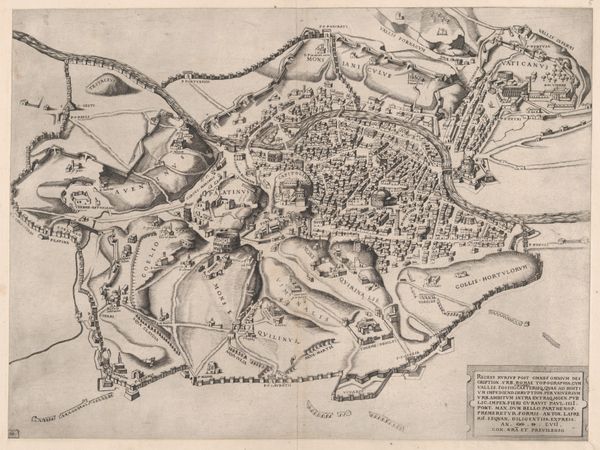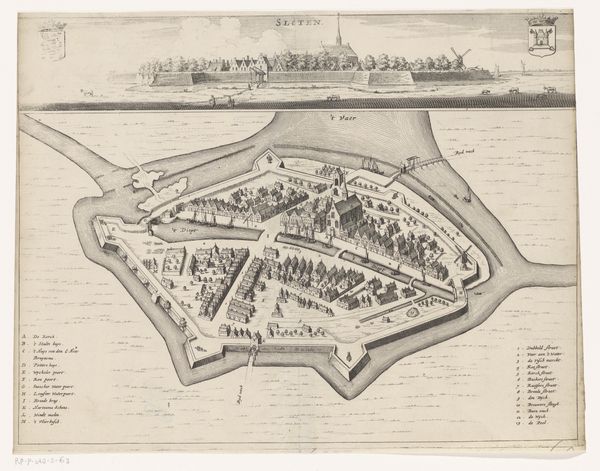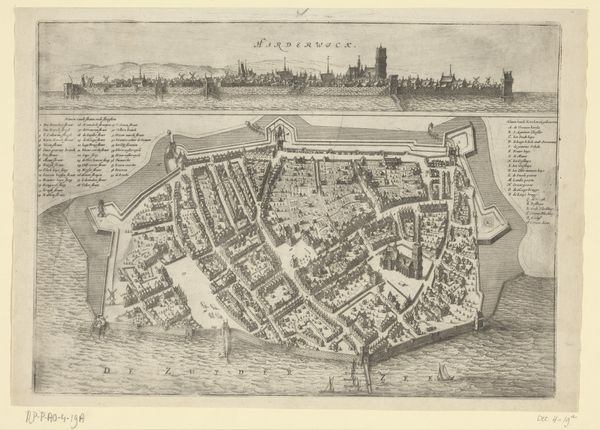
Stadt und Castel Landscron von I.K.M Christiano Quinto Erobert Anno 1676 1676 - 1699
0:00
0:00
drawing, print, ink, engraving
#
drawing
#
ink drawing
# print
#
ink
#
cityscape
#
history-painting
#
engraving
Dimensions: 351 mm (height) x 426 mm (width) (plademaal)
Curator: Here we have "Stadt und Castel Landscron von I.K.M Christiano Quinto Erobert Anno 1676," dating from between 1676 and 1699, attributed to Johann Husman. It's a fascinating piece rendered in ink, showcasing both drawing and engraving techniques, currently held in the SMK. Editor: My first impression is of meticulous detail—it feels like a surveyor’s gaze, precise and calculated, yet there's a definite sense of the materials at play, especially the varying line weights in the ink that create depth. Curator: Precisely! And considering the title translates to "City and Castle Landscron conquered by His Royal Majesty Christian the Fifth in the year 1676", it's also a document of political and military power, immortalising the Danish King's victory. We should observe how Husman uses this God’s-eye-view perspective to visually emphasize control and dominion. Editor: You know, it's compelling how the sharp angles of the fortress contrast against the relatively softer depiction of the waves. Was this print intended solely for elite audiences, a display of power, or did it circulate more widely as propaganda? Its creation as a reproducible engraving opens interesting avenues for exploring its consumption. Curator: It likely served multiple purposes. Certainly, it reinforced the King's image, but engravings were also used for disseminating information more broadly, particularly among literate audiences. It would have visually legitimized Christian V's rule by showcasing his military achievements. This intersection between power, artistic production and information distribution makes it very intriguing for a history-informed analysis. Editor: Right, I’m thinking about the socio-economic dynamics of printmaking. Who was involved in its production, the engravers, the publishers? How did their labor contribute to creating and sustaining this image of royal authority? It also highlights how craft became deeply intertwined with the construction of national identity and power through accessible visual media. Curator: Absolutely. And the way the landscape is depicted also offers a clue. Note the very stylized depiction, everything neatly organized. It emphasizes control, reflecting a desire to not only conquer but also to understand and classify territory. It represents more than a landscape, it communicates Denmark's vision for territorial and political dominion. Editor: Examining the materiality further, the texture and tone achievable through the engraving process add another layer of significance. There is a crispness and clarity intended to suggest order and, yes, dominance over both the land and sea. Thinking about this today makes me question how effectively we utilize such powerful visual communication. Curator: Indeed. Looking at this print allows us to not only witness a historical event, but it lets us reflect on how images continue to play crucial roles in shaping historical narratives and affirming political ideologies. Editor: It's interesting to reflect on how this specific visual record leaves a lasting mark not only of history but also of the technologies and creative laborers who were instrumental in disseminating it.
Comments
No comments
Be the first to comment and join the conversation on the ultimate creative platform.
